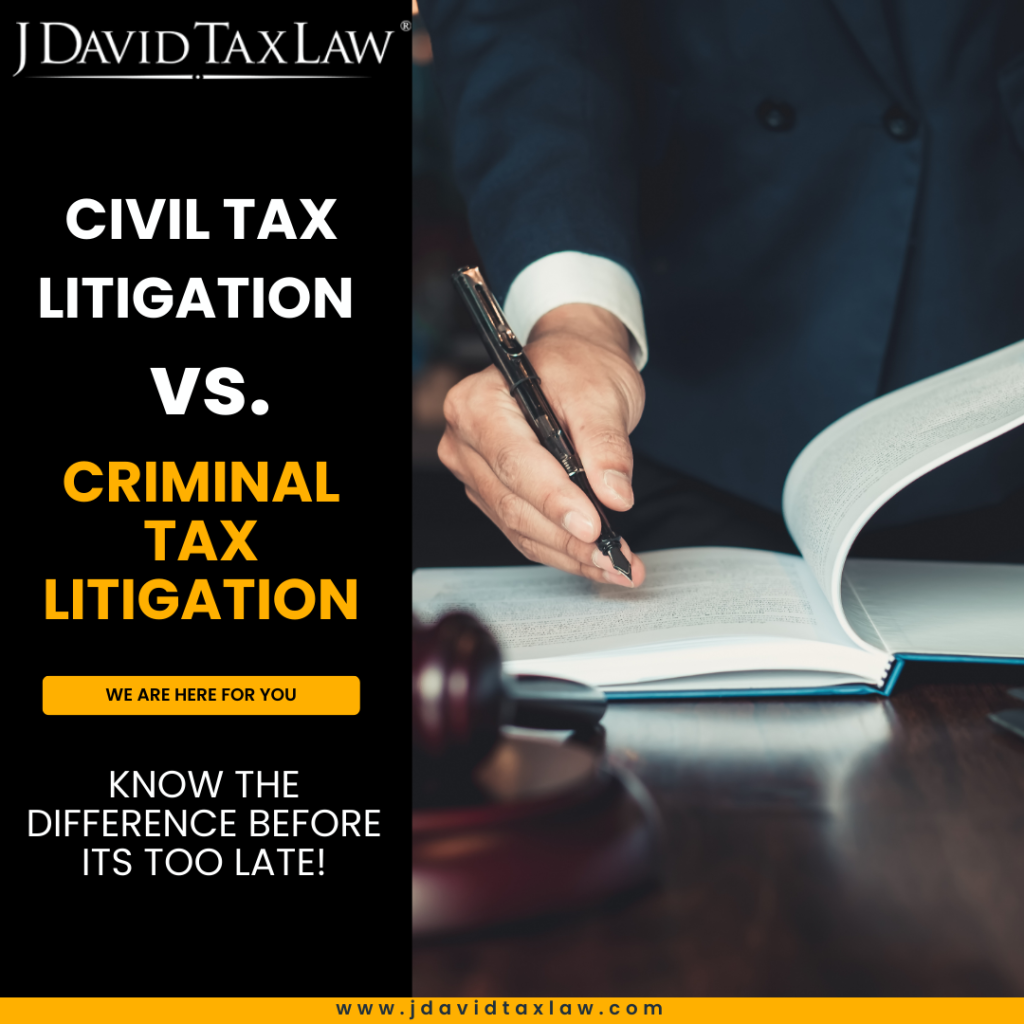Wage Garnishment Relief
IRS Wage Garnishment Release for Manageable Tax Resolution
Find Out If You Qualify for Tax Relief in 4 Easy Steps!
Check Your Eligibility for Wage Garnishment Relief Today!

Best Tax Service for Release of Garnishment
J. David Tax Law assists in filing IRS Form 12153 to request a Collection Due Process hearing or Form 911 to request Taxpayer Advocate Service assistance. Our team assists in preparing and submitting financial documentation such as IRS Form 433-A or Form 433-F to demonstrate your inability to pay debt and establish eligibility for relief.
If you qualify based on your financial condition, our attorneys can guide you to settle your tax debt for less than the full amount owed through an offer in compromise.
J. David Tax Law attorneys act right away to stop IRS wage garnishment and work to negotiate the full release or reduction of the levied amount as soon as possible. In most cases, we settle these disputes in as little as 48 hours!
If you fail to take action after receiving this notice, the IRS garnish wages directly through your employer. This process continues until your tax debt is fully paid, including any interest and penalties. Wage garnishment can severely impact your financial situation, leaving you with less take-home pay. It’s essential to understand how to stop this action and work towards resolving your tax debt effectively. Learn more about wage garnishment here.
Get the IRS off your back and protect your income to secure not just your wages but your financial future with professional garnishment lawyers.
Eligibility Requirements for Release of IRS Wage Garnishment
Basic Eligibility Criteria
• Proof of Financial Hardship
• Established Payment Plan
• Filed Tax Returns
• Compliance with IRS Requirements
Specific Qualifications:
• If you are unable to pay your tax debt and basic living expenses, you may qualify for CNC status. This designation pauses the garnishment while your financial situation is reviewed.
• If you qualify for an Offer in Compromise, you may be eligible for a garnishment release. This program allows you to settle your tax debt for less than the full amount owed. Eligibility is based on financial hardship or disputes over the amount owed.
• If you received a notice of deficiency and disagree with the IRS’s assessment, you can file an appeal. During the appeal process, the wage garnishment is typically suspended, pending the outcome.
Financial Requirements
• Income and Expense Evaluation: The IRS evaluates your financial situation, including all sources of income such as wages, dividends, and any other future income projections. They also assess your allowable expenses based on IRS standards for basic living expenses like housing, utilities, transportation, and medical costs.
• Asset Review: The IRS examines the value of your assets, including cash, investments, real property, and other valuables to determine your overall ability to pay your tax debt. Significant asset equity may affect your eligibility for garnishment release.
Additional Considerations
• No Active Bankruptcy
• Low-Income Certification
• Documentation to support claims of financial hardship
To learn more about how a wage garnishment attorney can help you, check out this guide.

Reliable Tax Service Solution for Immediate Garnishment Release

Free Tax Consultation
We begin with a free tax consultation to review your tax debt, assess the impact of the garnishment, and provide a clear path toward resolution.


Eligibility Evaluation for Garnishment Release
We conduct an eligibility evaluation for garnishment release using your financial hardship, IRS compliance, and taken steps to resolve your tax debt.

Form Submission and IRS Negotiation
Once eligibility is confirmed, we handle the form submission and IRS negotiation process on your behalf.

Release of Garnishment
Once the IRS approves your eligibility and the terms of your resolution plan, they will notify your employer to stop withholding your wages and ensure the garnishment is lifted.

Free Tax Consultation
We begin with a free tax consultation to review your tax debt, assess the impact of the garnishment, and provide a clear path toward resolution.



Eligibility Evaluation
We conduct an eligibility evaluation for garnishment release using your financial hardship, IRS compliance, and taken steps to resolve your tax debt.

Form Submission & IRS Negotiation
Once eligibility is confirmed, we handle the form submission and IRS negotiation process on your behalf.



Release of Garnishment
Once the IRS approves your eligibility and the terms of your resolution plan, they will notify your employer to stop withholding your wages and ensure the garnishment is lifted.

Our wage garnishment understand the challenges that arise from losing such a large portion of your paycheck and have the expertise to negotiate directly with the IRS on your behalf.
Why Choose Our Wage Garnishment Lawyers?
Taxpayers facing IRS wage garnishment often lose a significant portion of their paycheck—sometimes up to 25%—making it difficult to cover essential expenses like rent, utilities, and groceries. This sudden reduction in income can lead to severe financial instability, leaving you overwhelmed and unsure of how to resolve your tax debt issues while maintaining your daily living expenses. In addition, we also offer wage levy release services, which can further protect your earnings from IRS collection actions.
By addressing the underlying tax debt, we work to stop garnishment quickly and effectively, ensuring your income is restored while we develop a strategy for long-term relief. With our legal support, you can regain control of your finances and move forward with confidence.
Need help with the release of your garnished earnings, give us a call now.
What Are Your Options If Your Tax Garnishment Release Is Denied?
Appeal the Decision
Negotiate a Payment Plan
Seek IRS Non Collectible Status
Submit an Offer in Compromise
Request a Collection Due Process Hearing
How can I stop a wage garnishment immediately?
How long does it take to resolve issues after receiving an IRS garnishment letter?
Can tax attorneys in my area help reduce my garnishment amount?
Yes, the tax attorneys at J. David Tax Law specializes in negotiating reductions in wage garnishment amounts. We can explore options such as installment agreements, Currently Non-Collectible status, or Offers in Compromise to lessen the financial impact of garnishment. Our goal is to help you regain financial stability as quickly as possible.
Read our blog for more information on how our tax attorneys can help.
Can I negotiate a wage garnishment release if my spouse owes the tax debt?
Yes, J. David Tax Law assists clients in negotiating wage garnishment releases even when the debt is owed by a spouse. We can help establish financial hardship or explore options like Innocent Spouse Relief, depending on your circumstances, to protect your income and resolve the situation effectively.
What should I do if I can't afford to pay a tax attorney?
What types of income are exempt from IRS wage garnishment?
Certain types of income are exempt from IRS wage garnishment, including Social Security benefits, disability payments, child support, and veterans’ benefits. At J. David Tax Law, we can help you understand which income sources are protected and work to safeguard your exempt income while addressing your tax debt issues. You can refer to this comprehensive guide for more information about how wage garnishment works.
Additional Resources

- Tax Litigation
Civil Tax Litigation vs. Criminal Tax Litigation: What You Need to Know

- Tax Litigation
Corporate Tax Litigation: Common Challenges and How to Overcome Them

- Tax Litigation
What a Tax Litigation Attorney Can Do for Businesses and Individuals

- Uncategorized
Penalty Abatement for Individuals vs. Businesses: Is Your Tax Strategy Right?

- Uncategorized
Don’t Take ‘No’ for an Answer: Learn About Non-Collectible Status Appeals!

- Uncategorized
Is It Too Late for Penalty Abatement? Spoiler: It’s Not!


